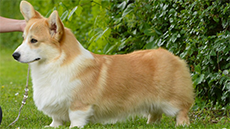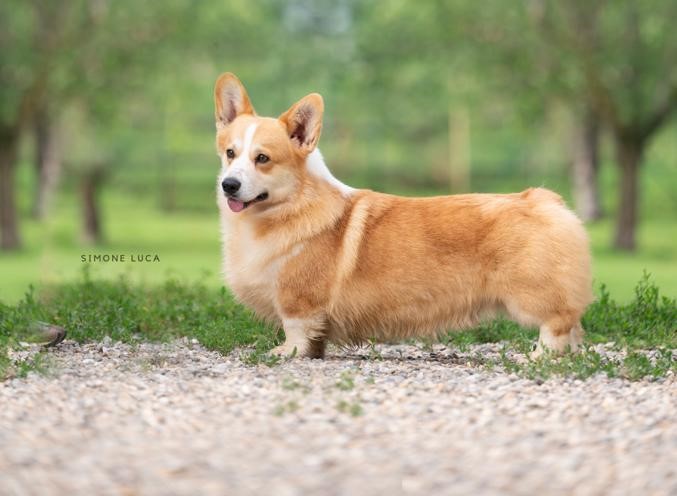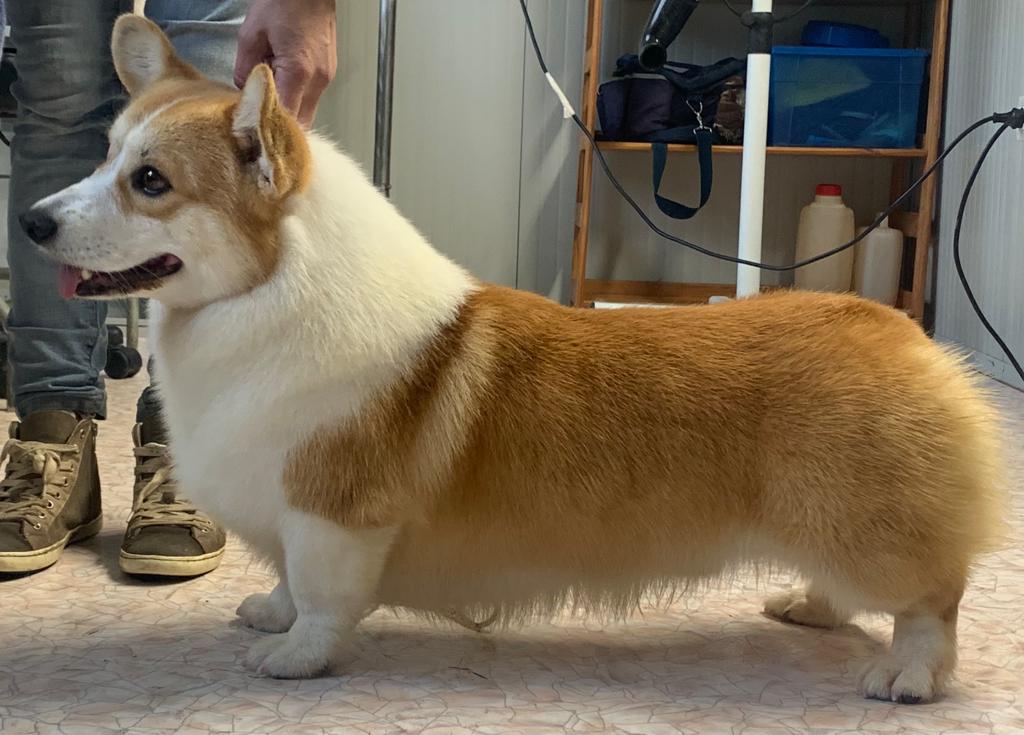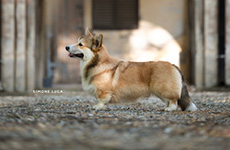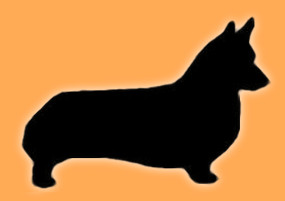
ORIGINS
It is not known how and when this breed was introduced in the British Islands: some argue that the Corgi Pembroke, which has similar aspects to Västgötaspets (Swedish Vallhund), a Swedish breed of sheepdogs, has been imported by the Vikings. According to others, however, the origin of the Corgi is native, as in Britain has been found records in historical documents dating to the tenth century of a "curre" or "cur dog", a word which means working dog and that sounds very similar to the Welsh pronunciation of the word "Corgi".
The area of origin and of largest diffusion of the breed remains the Pembrokeshire in Wales, whether it arrived there by sea in the wake of Nordic sailors, or as a result of the evolution of local animals present in the region at the time of the first human settlements.
The Pembroke's Welsh name is "We Sodli" which means "hock", to indicate its characteristic habit of biting cows' hocks. Welsh Corgi were used as sheepdogs, driving the herd to pasture, watching over it at night and returning to the herd cattle went astray. His appearance at that time was undoubtedly quite different from what we see today. It differed in type and size and had a rough coat, but it had the same temperament it has today. The instinct to bite hocks was useful in guiding cattle, but turned out to be a grave mistake if applied to sheep. In 1880 the shepherds of Cardiganshire (now Ceredigion), in order to overcome this problem, decided to breed it with the Corgi Welsh Collie, another shepherd breed used in Wales. From this mixture is believed to have originated the Cardigan variety, which counts among its characteristics the blue merle mantle common to all varieties of collies.
DOOKIE
The Corgi, despite its qualities and uncommon abilities, would have remained a farm dog if its fate had not led it to meet with a very special girl. In 1933, the then Duke of York, later King George VI, bought a puppy of this breed, Rozavel Golden Eagle, and gave it to his daughter Elizabeth (later Queen Elizabeth II). The dog was renamed Dookie and instantly hit the heart of the royal family. This first dog had been just the first of many others giving life to the Royal Family's breed known by the affix "Windsor". Since then, Corgi have become by definition "the Queen's dog", a definition still used today and well renown.
DESCRIPTION
The Welsh Corgi Pembroke is a lively, curious and intelligent little dog, with a characteristic foxy head, rather short legs and with or without a tail. The adjective "small" is related only to its size, because the character is that of a large dog, a working dog. Its dimensions make it an ideal companion that takes up little space in your home and is easily adaptable to both city and country life. It doesn't require particularly intense physical activity, even though it is rather difficult to tire. His short coat requires very little care, while being an excellent protection against the cold and wet, also because of a dense undercoat.
Its capacity for work, however, does not end there: the Corgi is an excellent hunter of mice and rabbits and sometimes pheasants and partridges. It can be trained to obedience and agility trials and is by nature a very good guard dog. Even those so-called "exposition specimens" keep intact these features, contrary to what has happened to many other breeds that, selected only on the basis of morphological characteristics, have indeed reached a high level of aesthetic perfection, but lost at the same time qualities of character and their ability to work.
TAIL LEGEND
Until a few years ago it was common practice to cut the puppies' tail in their first days of life. Today, in many European countries this practice has been banned and this has forced the FCI to update the breed standard.
But there is also a legend of how the Corgi Pembroke lost his tail: long, long ago, when the Earth was still young the Corgi was the Elven Queen's favorite pet to go riding with at night. Cardigans and Pembrokes had some beautiful, long, bushy tails with which waved nicely during their night raids. But one night, after a long day at work looking after cattle, a Pembroke Corgi decided he had enough and chose to go to sleep instead of being decorated with flowers by the goblins and be the Queen's steed. The elves shook him, pushed him and pulled him until he got up with a sigh. "I do not want to go out tonight," it complained, "I'm tired and in a bad mood and want to sleep. Find another animal for your night out,". After it said that it sat with fixed eyes and refused to move. The elves spoke to it, threatened him, tried to bribe him, screamed, all without getting anything. The Corgi had made up its mind, and nothing would change its mind. The Queen was furious and uttered a terrible curse "I will pin with a magic formula your tail to the floor in order to imprison you. Youìll be freed as soon as you agree to be my slave and serve me for my night rides whenever I desire." The Corgi did not like it one bit. It took a solemn oath that it would never be corrupted and began to pull and pull. Unfortunately, his tail was nailed to the floor. He pulled again and again until it finally broke free... but the tail was still nailed. He had just ripped the tail from its body! And since then the Corgi Pembroke no longer had a tail, in commemoration of the dog who rebelled against the Queen of the fairies. And like any good Welsh it's still fierce and proud, full of good will and will not tolerate threats and curses.

